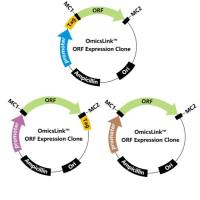Single-Strand Conformation Polymorphism Analysis of Mutations in Exons 4-8 of the TP53 Gene
互联网
332
The TP53 tumor suppressor gene coding for a nuclear phosphoprotein involved in cellular stress responses is the most frequently mutated gene in human cancers described so far (1 –4 ). Mutations are found throughout the gene but most frequently within the highly conserved middle region (exons 5–8) that encodes for the DNA-binding central region of the gene critical for the major function of TP53 protein as a transcriptional activator (5 ). The mutation spectrum of the TP53 gene varies from one tumor type to another with typical hot-spot codons for mutations (2 ,6 ). For instance, codons 157, 248, and 273 are frequently mutated in cigarette smoking-associated lung cancer, whereas mutations in codon 175 are rare. This codon, on the other hand, is often mutated in breast and colon cancer. In some cases, typical mutations can be linked with environmental exposures, such as CC→TT double mutation with UV radiation (7 ) and codon 249 AGG→AGT mutation with aflatoxin B1 and hepatitis B virus (8 ). These findings, in connection with the fact that one of the main functions of TP53 protein is putatively the protection of the genome (9 ,10 ) implicate the mutations of the TP53 gene in environmentally induced carcino-genesis in humans and the possible use of TP53-related markers in molecular epidemiology (11 –13 )









